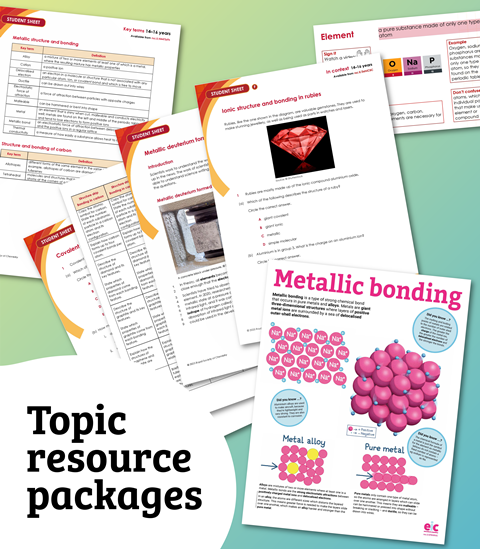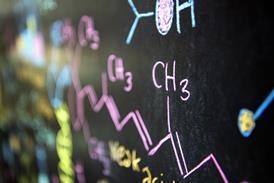All Feature articles – Page 26
-
 Feature
FeatureMultiple-choice tests - are they fit for purpose?
Of what value are multiple-choice tests in the new GCSE Science specifications?
-
 Feature
FeatureE-learning in practice
Making the most of the Internet and ICT to support teaching and learning in science
-
 Feature
FeatureThe Power of NMR: The Beginnings
Originally a curiosity of the quantum world, NMR is now an essential tool for chemists, biochemists and clinicians
-
 Feature
FeatureNanomedicine arrives
Nanoscale chemical entities target the building blocks of biology with medicinal consequences
-
 Feature
FeatureAntimony revisited
The intriguing chemistry of antimony, one of the earliest elements to be discovered
-
 Feature
FeatureFrom waxes to riches
Supercritical carbon dioxide can be used to remove valuable chemicals, including waxes, from plants, the most widely available and cheap source of biomass in the world
-
 Feature
FeaturePhotochromism in view
A context-based chemistry practical highlighting the importance of chemical kinetics and spectroscopy in commercial photochromic dyes
-
 Feature
FeatureFighting cancer - the early years
Research and development of nitrogen mustards 60 years ago sets the scene for new era in the treatment of cancer
-
 Feature
FeatureCambridge Pre-U chemistry
The 'Cambridge Pre-U' qualifications - the latest alternatives to A-levels
-
 Feature
FeatureGood lab practice
Students who want to work as analytical chemists in industry need to be introduced to the basic regulatory requirements of 'good laboratory practice'
-
 Feature
FeatureExperimental nanoscience for undergraduates
The recent development of low cost, user-friendly scanning tunnelling microscopes has brought nanoscience experiments into undergraduate laboratories
-
 Feature
FeatureGeorge III, indigo and the blue ring test
Can a urine test offer insight into George III's insanity?
-

-
 Feature
FeatureHalogenating enzymes in organic synthesis
The use of haloperoxidases, from seaweed, in organic syntheses is simple and cost-effective and offers more environmentally-friendly routes to a host of compounds
-
 Feature
FeatureBelladonna, broomsticks and brain chemistry
Poisonous plants such as deadly nightshade produce toxic tropane alkaloids. These chemicals have been exploited in magic, murder and the design of a host of useful therapeutic drugs
-
 Feature
FeatureBiosensors based on DNA
Chemists are developing new medical and environmental sensors based on DNA sequences which have been selected to bind certain targets such as cancer markers in blood
-
 Feature
FeatureCF3SF5 - a 'super' greenhouse gas
Trifluoromethyl sulfur pentafluoride - a byproduct of the electronics industry - has been named a 'super' greenhouse gas by physical chemists
-
 Feature
FeaturePolymers on the move
Fuel prices and the impact transport has on the environment are leading car and aircraft manufacturers to use more lightweight plastics and composites in their products
-
 Feature
FeatureFuelling the future: solid phase hydrogen storage
The portable and safe storage of hydrogen will be fundamental to the success of fuel cell-powered cars
-
 Feature
FeatureEarly pain-free days
Towards the latter part of 19th century cocaine provided the lead for chemists to develop effective local anaesthetics for dental surgery











